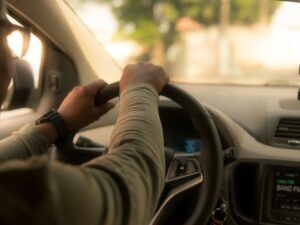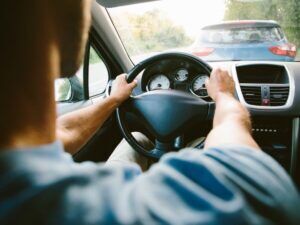How to Prevent a Car Accident in Sacramento

Every year, car accidents kill and seriously injure millions of Americans. It’s impossible to steer clear of every collision, but many car crashes are preventable tragedies that can be avoided if motorists take safe driving precautions.
At Demas Law Group, P.C., we’ve seen our share of needless damage and injuries from avoidable auto accidents. We understand the physical, psychological, and financial prices victims pay after a serious crash. Here, our attorneys cover some helpful driving tips on how to prevent a car accident in California.
Tips on How to Avoid a Car Accident
 Here’s some basic advice for car accident prevention:
Here’s some basic advice for car accident prevention:
- Follow traffic laws – State and federal traffic laws exist to keep everyone safe. Obey these laws at all times by driving at the speed limit, coming to a full stop at stop signs and red lights, and obeying all relevant traffic signals.
- Don’t linger in the fast lane – On multi-lane roads, the left lane is reserved for faster or passing traffic. Stay out of the left lane unless you need to pass a slower vehicle. Make sure to obey the speed limit at all times, even when passing in the fast lane.
- Beware of blind spots – Every vehicle has “blind spots,” which are areas outside the car where a driver’s view is obstructed. To avoid blind spot accidents, familiarize yourself with the locations of your blind spots and monitor them at all times when you drive. Be careful around large commercial trucks. Their blind spots are much larger than those on a standard passenger car.
- Don’t drink and drive – Even a small amount of alcohol can affect your driving abilities. Drivers under the influence of alcohol tend to have impaired judgment, slower reaction times, decreased coordination, and blurred vision. Any of these impairments significantly increases the risk of car crashes.
- Avoid distracted driving – Anything that diverts your attention from the road counts as distracted driving. Common distracted driving behaviors include texting, talking on the phone, and eating or drinking behind the wheel. Even minor distractions create opportunities for accidents.
- Get plenty of rest – Fatigue can have cognitive effects that are just as dangerous as the effects of alcohol. When you drive drowsy, you’re more likely to drift out of your lane, follow too closely, and nod off in traffic. Make sure you’re well-rested any time you plan to get behind the wheel.
- Know your limits – All cars have different turning radiuses, stopping distances, and other unique factors that determine their handling. To avoid accidents, it’s essential to understand your vehicle’s capabilities and become familiar with how it responds in various traffic scenarios.
- Keep your car in good shape – A properly maintained vehicle is a safe vehicle. Routine maintenance reduces your chances of a breakdown or loss-of-control accident caused by component failure. You should regularly check and keep your tires, brakes, fluids, wipers, filters, belts, and hoses.
- Stay calm – Driving can be stressful, especially when roads are congested and drivers act rudely. You may feel tempted to respond to these stressors with antagonistic or reckless driving behavior, but it’s important to remain calm. Reacting in anger will only increase your risk of involvement in a road rage accident.
What Is Defensive Driving?
 The term “defensive driving” refers to driving attitudes and proactive behaviors intended to help prevent car accidents. You can practice defensive driving by:
The term “defensive driving” refers to driving attitudes and proactive behaviors intended to help prevent car accidents. You can practice defensive driving by:
- Planning your commute – Some of the most important defensive driving behaviors begin before you even start driving. Make a point of checking the weather before you leave to determine whether you should avoid certain areas or plan for extra travel time. If you’re visiting a new place, pull up your GPS or map directions in advance.
- Scanning your surroundings – You don’t have 360-degree vision, so you can’t always see everything happening around you in traffic. However, car accidents can happen at any angle, so it’s important to scan your mirrors regularly to keep close tabs on your surroundings.
- Increasing your following distance – Monitor the distance between the front of your car and the vehicle ahead of you. Following at a safe distance prevents rear-end car accidents. Make sure to increase your following distance when you travel at higher speeds, in the dark, or in wet or icy conditions.
- Yielding to aggressive motorists – If you find yourself on the receiving end of aggressive driving behaviors such as tailgating, swerving, or rude gesturing, it’s always best to slow down and yield to the other driver. When you respond to aggression with aggression, you risk escalating the situation and increasing the chances of a car crash.
- Preventing distractions before they happen – Avoid preventable distractions. Before you get behind the wheel, put away your cell phone and adjust your GPS and vehicle settings the way you want them. If you need a drink, a bite to eat, or a glance in the mirror, pull over first.
Contact a Sacramento Car Accident Lawyer
 If you were hurt in a Sacramento car accident, you need help from an experienced California injury lawyer. At Demas Law Group, P.C., we can help you prepare a strong insurance claim or personal injury lawsuit to seek justice and fair compensation.
If you were hurt in a Sacramento car accident, you need help from an experienced California injury lawyer. At Demas Law Group, P.C., we can help you prepare a strong insurance claim or personal injury lawsuit to seek justice and fair compensation.
Our knowledgeable and attentive attorneys can address all of your questions and concerns in a free initial case review. Contact us today to speak with a trusted car accident lawyer.
